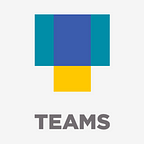User Experience: Fun for the Whole Family!
TEAMS Design
For decades, industrial designers seemed to be the sole defenders of the user and all that is good. Their team members in engineering and marketing were too busy fighting their own battles meeting cost and sales targets to devote time to the needs of the user. With such polar priorities, it’s a wonder we could create anything together.
The process has been like playing a board game where one player’s objective is to build the most hotels, someone else has to capture Australasia, and the last player is trying to catch Professor Plum in the library with the lead pipe. It’s a process that’s as exacerbating as it is fruitless.
Enter the Dragon
But now there’s a new game for the whole family; it’s called User Experience Design. The rules are simple: all of the players get to ideate, develop toward the same objective, and are allowed to help each other. There’s a special round when everyone puts on their design thinking hats to come up with ideas starting with nothing but a blank sheet of paper. If an idea benefits the end user’s experience, then it automatically moves to the top of the pile and wins bonus points. The team also gets to test those ideas on actual users — and they’re still allowed to improve the concept according to the feedback. The game only ends when everyone agrees that the users will love the idea so much that they’ll blog about it, take selfies with it, or spend time thinking up clever #hashtags about how much they love it.
It’s a great game
But it wasn’t our hero industrial designer who came up with UX; It was the user interaction designers, who built it to span the enormous chasm between their frontend designers and backend developers. The components that make up UX design are all methods that industrial designers have been using for decades — ethnographic research, ideation workshops, user-centered design, early prototyping, and iteration — but with one critical difference: UX requires that all team members participate in these activities and not just the designer.
This critical change makes a huge difference; with team members from a variety of disciplines involved, obstacles and opportunities are seen from every perspective, leading to an end experience that really does fulfill the needs of each stakeholder.
So we’re good, right?
Not quite. Much of the UX work that we see today concerns only digital experiences, remaining woefully separated from experiences with tangible objects in the physical world. While our frontal cortex is easily sucked into the allure of the screen, the longer-lasting experiences are those found in the material world — where our emotional capacity is deeper and connected with multiple senses. As our users become accustomed to a well-designed digital world, they need — and have every right to expect — more meaningful interactions with their physical products and services.
So get your whole team playing the same game
Align them around the same user-driven objectives so they can work toward goals that complement each other, not goals that are disconnected. Empower the designer to take on a broader role in the UX methods that lead to concept creation, not just its execution. Design thinking is, after all, their world, and the results could be better than …getting the Triple Word Score.
